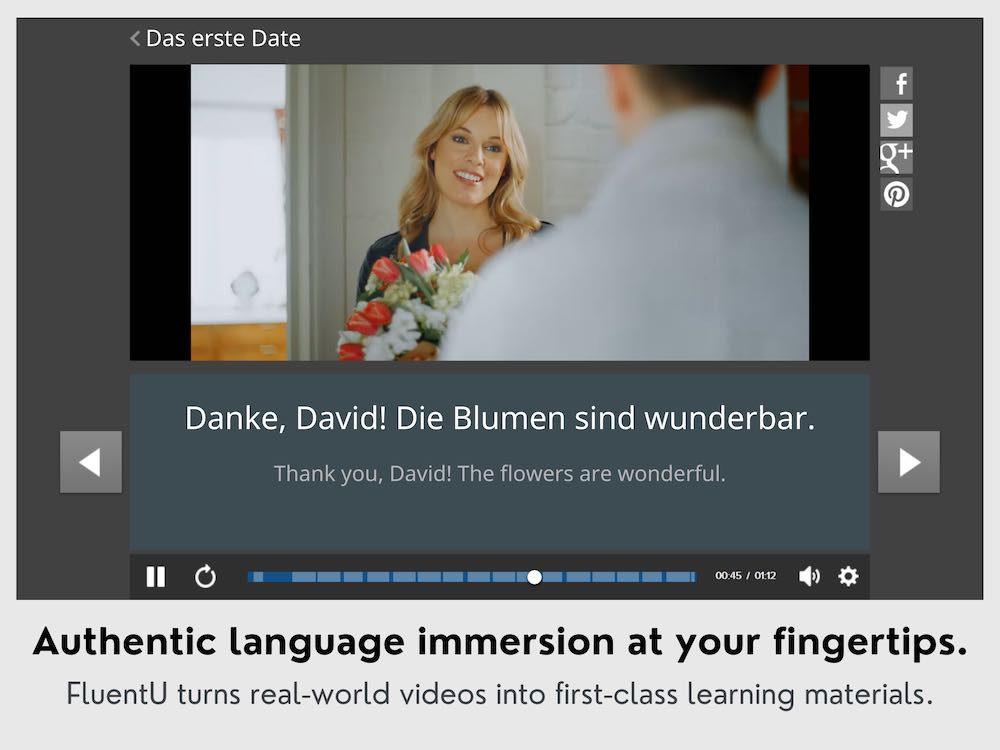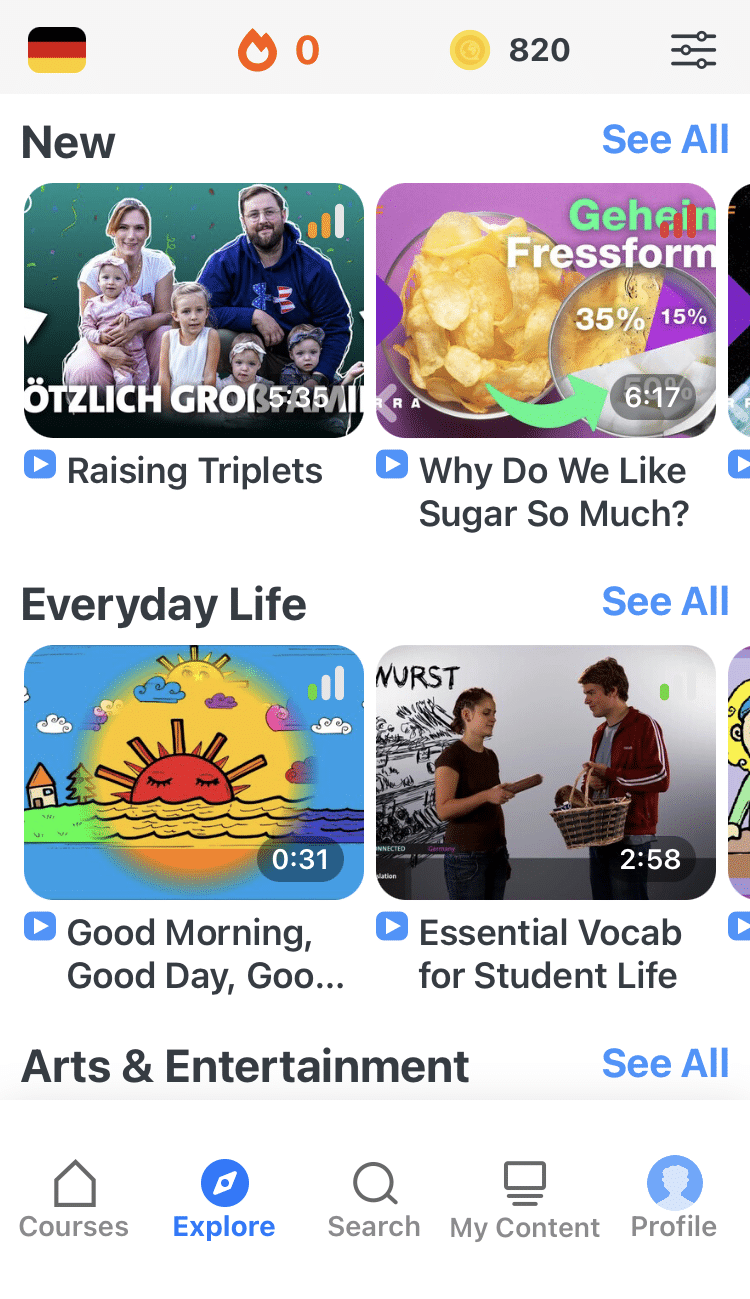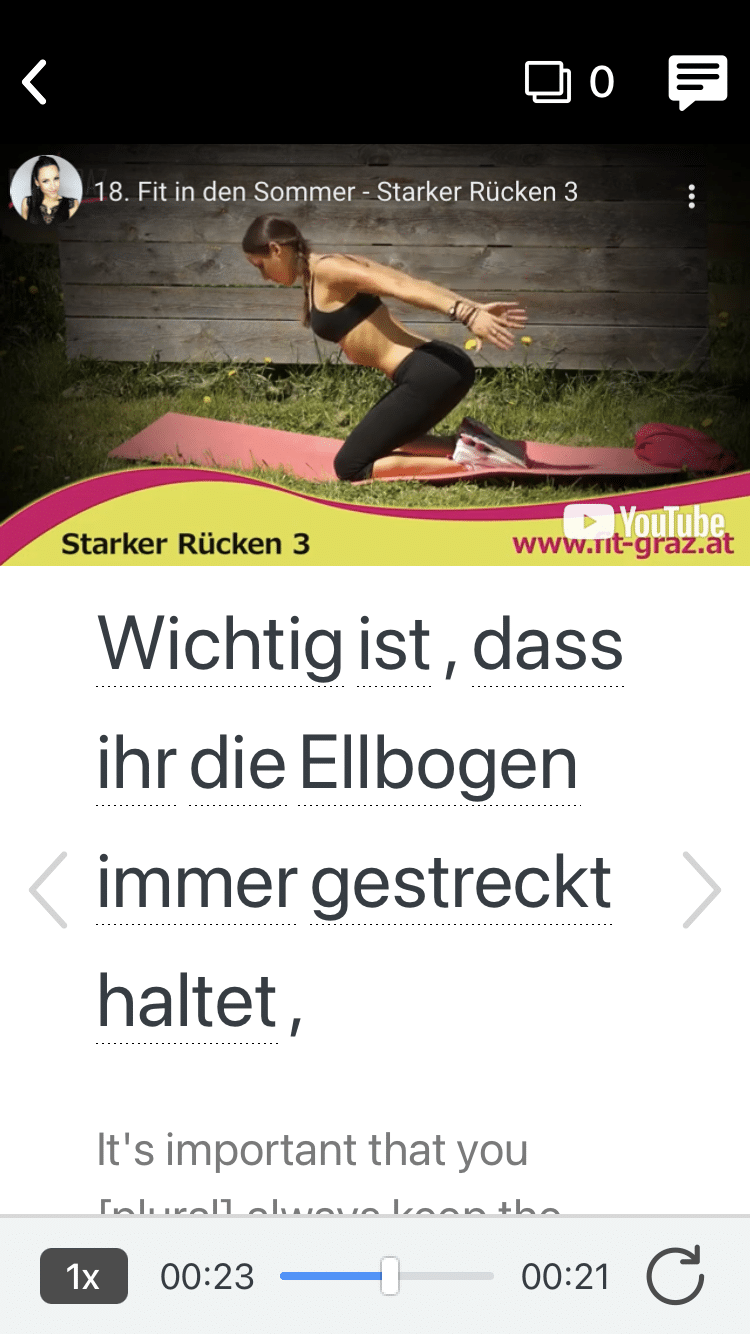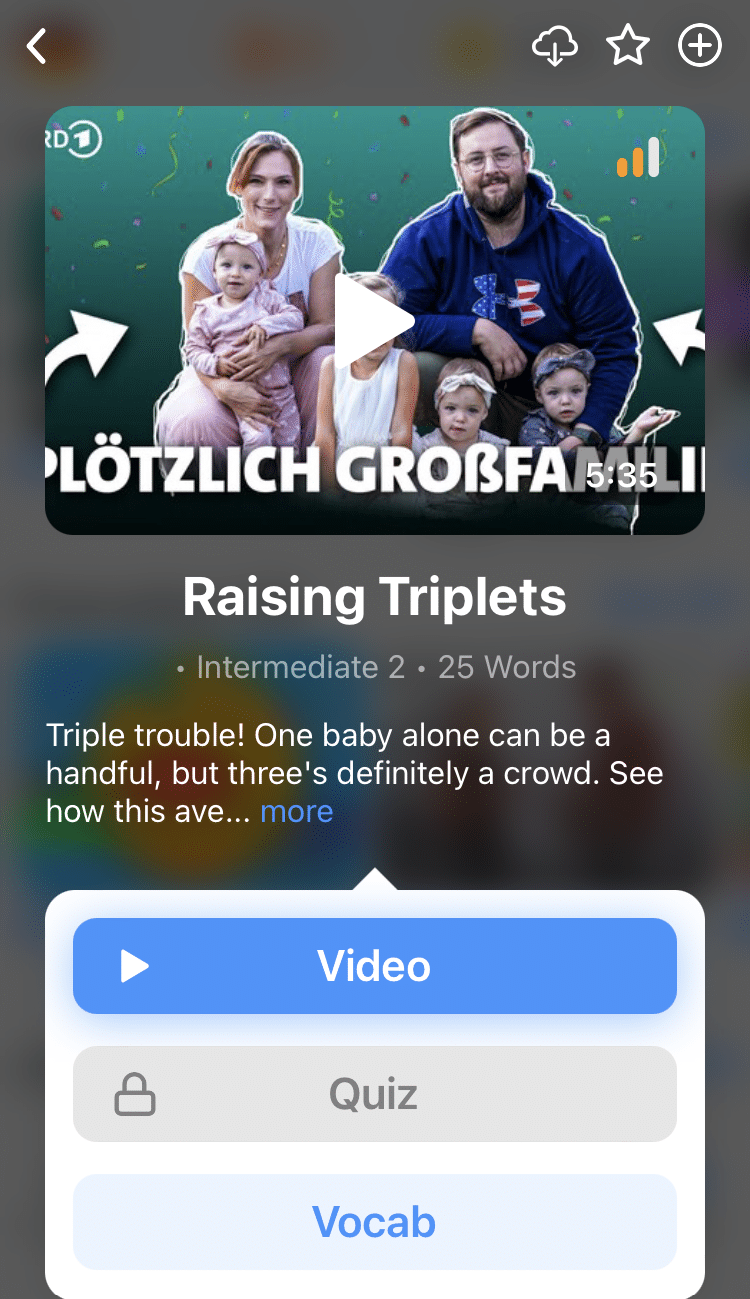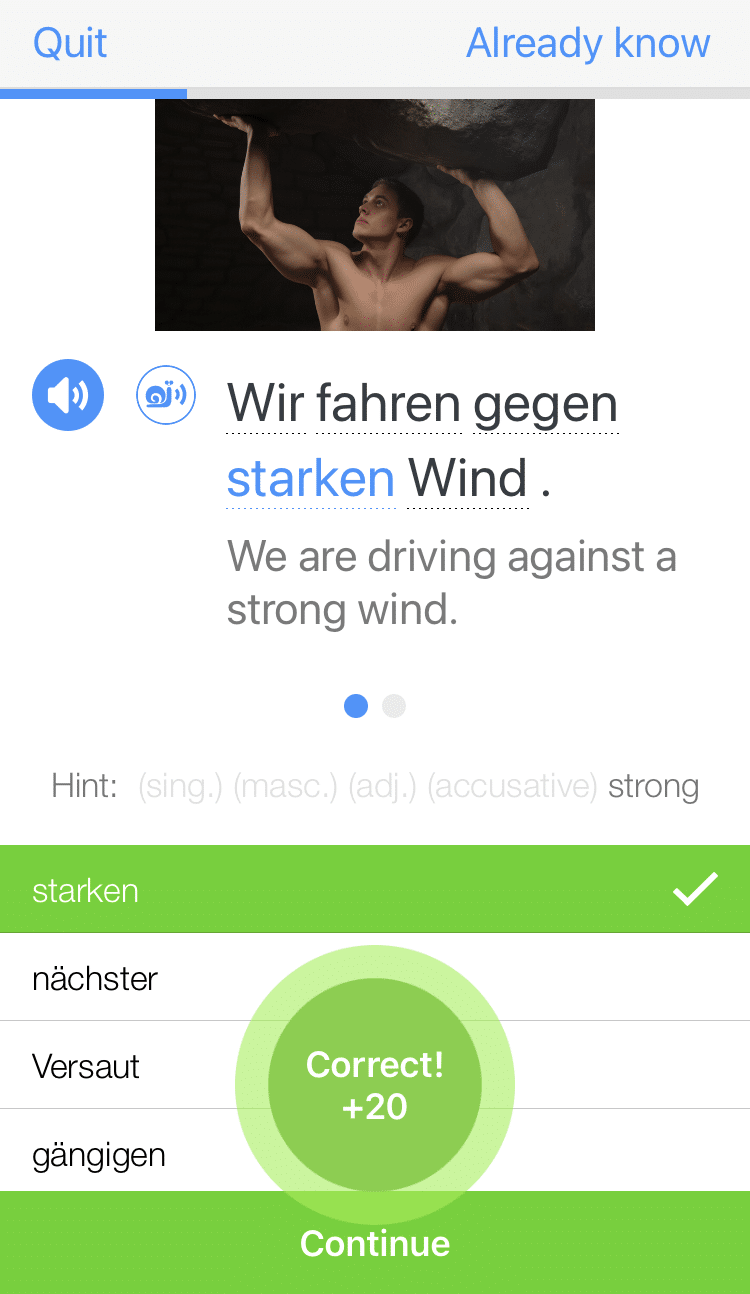
Love Eating? Learn These 4 Types of Simple German Sentences Through Food and Recipes!
How’s this delicious, traditional German sausage dish looking to you?
Not everyone loves reading, podcasts, movies, traveling or conversations with strangers.
But let’s be honest: Almost everyone loves food.
This near-universal love of culinary delights is just one of the many reasons why food and recipes are a great way to learn German.
Another chief reason is that food and recipes are often simple subjects dealt with in a simple fashion, which means that if you are a beginning German learner, these can be great topics for practicing simple German sentences.
And that’s exactly why we’re using food to learn four basic types of German sentences today. But first let’s take a closer look at the benefits of learning with cuisine.
Download: This blog post is available as a convenient and portable PDF that you can take anywhere. Click here to get a copy. (Download)
Why Recipes and Food Are Great Ways to Learn Simple German Sentences
Recipe books contain simple sentences and pictures to help you puzzle them out.
Walnusskerne hacken. (Chop the walnuts.) Gemüse waschen. (Wash the vegetables.) These are not complex sentences—almost more like German phrases, really.
Indeed, most sentences that you find in recipe books won’t be complex, either.
To make matters even simpler, you’ll find that most recipes, either in cookbooks or online, come with illustrations to make comprehension that much easier.
Simple sentences are useful in grocery stores.
Wo stehen die Kekse? (Where are the cookies?) This is a simple sentence, but a necessary one if you’re going to spend any time in Germany. Grocery stores can be a great place to practice your simple German, since chances are you’re not going to know where anything is and will need some help navigating the store.
Plus, in my experience, many grocery store employees only speak German, so you’ll have the (fortunate) handicap of not being able to fall back on English.
You’ll also need simple German sentences in restaurants.
Ich hätte gern ein Bier (I would like a beer). Ordering food and drink is one of the first things that any new language learner discovers—and food and drink orders are almost always made of very simple sentences.
German recipes and food can be delicious, so you should take any excuse to learn about them.
Spargel, Sauerbraten, Schnitzel, Spätzle! All of these are German or Austrian foods, and all of them are worth trying. German food gets a bad reputation sometimes, but it’s actually quite hardy, fresh and delicious.
Try out one of these recipes and combine your Deutschlernen with learning about German food—an integral part of the culture.
The 3 Most Important Rules to Remember About German Sentences
Word order is the most important aspect of German sentences—both simple and otherwise—to remember. German sentences can be complicated, but start simple and you’ll find yourself correctly ordering complex sentences in no time.
1. Verb position in single-clause sentences
In a normal subject-verb German sentence, always put the verb in second position.
Ich esse Obst.
(I am eating fruit.)
Morgens esse ich Müsli.
(Mornings I eat muesli.)
2. Verb position in multiple-clause sentences
In a sentence with multiple clauses, the first clause follows the same rule as a single-clause sentence: verb always in second position. But in the second, dependent clause, the verb is booted to the end of the sentence.
Weißt du, ob er eine Reservierung hat?
(Do you know if he has a reservation?)
3. Verb position in sentences with helping verbs
If a one-clause sentence has two verbs, the helping verb (the verb that’s conjugated) stays in second position, while the infinitive verb goes to the end of the sentence.
Ich möchte ein Bier. (I’d like a beer.)
To hear dozens of examples of simple sentence structure as it’s used in everyday life by native German speakers, check out FluentU.
FluentU takes authentic videos—like music videos, movie trailers, news and inspiring talks—and turns them into personalized language learning lessons.
You can try FluentU for free for 2 weeks. Check out the website or download the iOS app or Android app.
P.S. Click here to take advantage of our current sale! (Expires at the end of this month.)
Now that we have those basics down, let’s get to the four different kinds of simple sentences you can practice through food and recipes.
4 Types of Simple German Sentences You Can Learn Through Recipes
1. Questions
When you’re using a question word, remember the rule listed above: The verb must be in second position. Put the question word first—wo (where), wann (when), wer (who), was (what), warum (why)—then the verb, and then whatever you are asking.
When you’re not using a question word, you can break that rule: Invert the subject and the verb. For example:
Hast du Hunger?
(Are you hungry?) Literally: Have you hunger?
How can you use food/recipes to practice German questions?
Simple! If you’re in Germany, you’ll need to eat, but you probably won’t know where everything is (the grocery stores or the food within the grocery stores). Ask somebody what their favorite grocery store is or where the coffee is in the grocery store.
Or, practice making a German recipe with a friend, and ask each other questions about the directions.
Examples
Wo steht Kaiser’s?
(Where is Kaiser’s?) Note: Kaiser’s is a common German grocery store.
Wo steht der Kaffee?
(Where is the coffee?)
Was ist deiner Lieblingssupermarkt?
(What is your favorite grocery store?)
Hast du Kartoffeln gekauft?
(Did you buy potatoes?)
Note the verb in first position in this question.
Wie lange kocht man die Butter?
(How long do you cook the butter?)
2. Imperatives/Instructions
There are three different kinds of imperatives in German: imperatives for du (you, singular, informal), imperatives for ihr (you, plural, informal) and imperatives for Sie (you, formal).
To form an imperative…
- for du, take the infinitive of the verb and drop the -(e)n.
- for ihr, take the ihr form of regular present tense (verb stem plus -t) and you’re done.
- with Sie, take the full infinitive verb and add Sie after it.
How can you use food/recipes to practice imperatives?
Well, recipes are all about instructions, aren’t they? Peruse a German recipe book, website or blog, and figure out just how imperatives work.
Or, practice imperatives yourself by trying out recipes with another Deutsch-learning friend. Tell each other what steps to follow next—and pretend to be formal with each other, so you can practice the Sie forms too!
Examples
Braten Sie die Kartoffeln.
(Fry the potatoes.) — for Sie
Benutzt viel Salz.
(Use lots of salt.) — for ihr
Hack die Karotten.
(Chop the carrots.) — for du
3. Requests
Remember rule number three above, dealing with sentences with helping verbs? This is where that rule’s going to come in handy. Requests involve helping verbs, like können (to be able to), möchten (to like to) and haben (to have).
So if you’d like to tell somebody that you want something, you would use the structure of:
[subject] + [verb] + [whatever you want] + [infinitive (haben, to have)].
How can you use food/recipes to practice requests?
In restaurants, of course! Restaurants are an ideal place to practice your German-speaking skills, since there aren’t too many paths that a conversation in a restaurant can take.
Tell your waiter or waitress what you’d like to eat and drink, and practice this essential kind of simple German sentence.
Examples
Ich möchte Fisch, bitte.
(I would like fish, please.)
Könnte ich bitte die Rechnung haben?
(Could I have the check, please?)
Ich hätte gern Kuchen.
(I’d like to have cake.)
4. Sentences with Two Simple Clauses
Ah, sentences with two simple clauses: where the verb-in-second position rule goes out the window. Remember: In relative clauses in German, the verb immediately goes to the end. So in the first clause, you keep the verb in second position, but in the second clause, the conjugated verb goes to the end.
If you’re in a situation where you have a conjugated helping verb and an infinitive in a second clause, then bump the infinitive to second-to-last place, and put the conjugated helping verb in last place. Sound complicated? Don’t fear—check out the examples below.
How can you use food/recipes to practice sentences with two simple clauses?
Talking about opinions! Tell your friends and family what you think of the various foods you’ve tried, and ask what they think. Or, if you’re making a recipe with someone, tell them what’s going on in this pot or that pan.
There are plenty of opportunities in daily life to try out simple two-clause sentences, but the best place to do it is with the simplicity and fun of food vocabulary.
Examples
Ich denke, dass Deutscher Kuchen sehr lecker ist.
(I think that German cake is very tasty.)
Kannst du fragen, ob wir unsere Rechnung haben können?
(Can you ask if we can have our bill?)
Here’s one of those sentences with two verbs in the relative clause. Not so bad, right? The conjugated verb, können, goes to the end, and the infinitive takes second-to-last place.
Ich finde, dass dieses Restaurant sehr teuer ist.
(I find that this restaurant is very expensive.)
Lots of German learners become overwhelmed by simple German sentences because German word order is so tricky. Don’t be one of them! Learn simple German sentences through food and recipes, one of the most fun and delicious ways to learn, and you’ll be conversing fluently about Kaiser’s, Schnitzel and Sauerbraten in no time.
Download: This blog post is available as a convenient and portable PDF that you can take anywhere. Click here to get a copy. (Download)
And One More Thing...
Want to know the key to learning German effectively?
It's using the right content and tools, like FluentU has to offer! Browse hundreds of videos, take endless quizzes and master the German language faster than you've ever imagine!
Watching a fun video, but having trouble understanding it? FluentU brings native videos within reach with interactive subtitles.
You can tap on any word to look it up instantly. Every definition has examples that have been written to help you understand how the word is used. If you see an interesting word you don't know, you can add it to a vocabulary list.
And FluentU isn't just for watching videos. It's a complete platform for learning. It's designed to effectively teach you all the vocabulary from any video. Swipe left or right to see more examples of the word you're on.
The best part is that FluentU keeps track of the vocabulary that you're learning, and gives you extra practice with difficult words. It'll even remind you when it’s time to review what you’ve learned.
Start using the FluentU website on your computer or tablet or, better yet, download the FluentU app from the iTunes or Google Play store. Click here to take advantage of our current sale! (Expires at the end of this month.)
